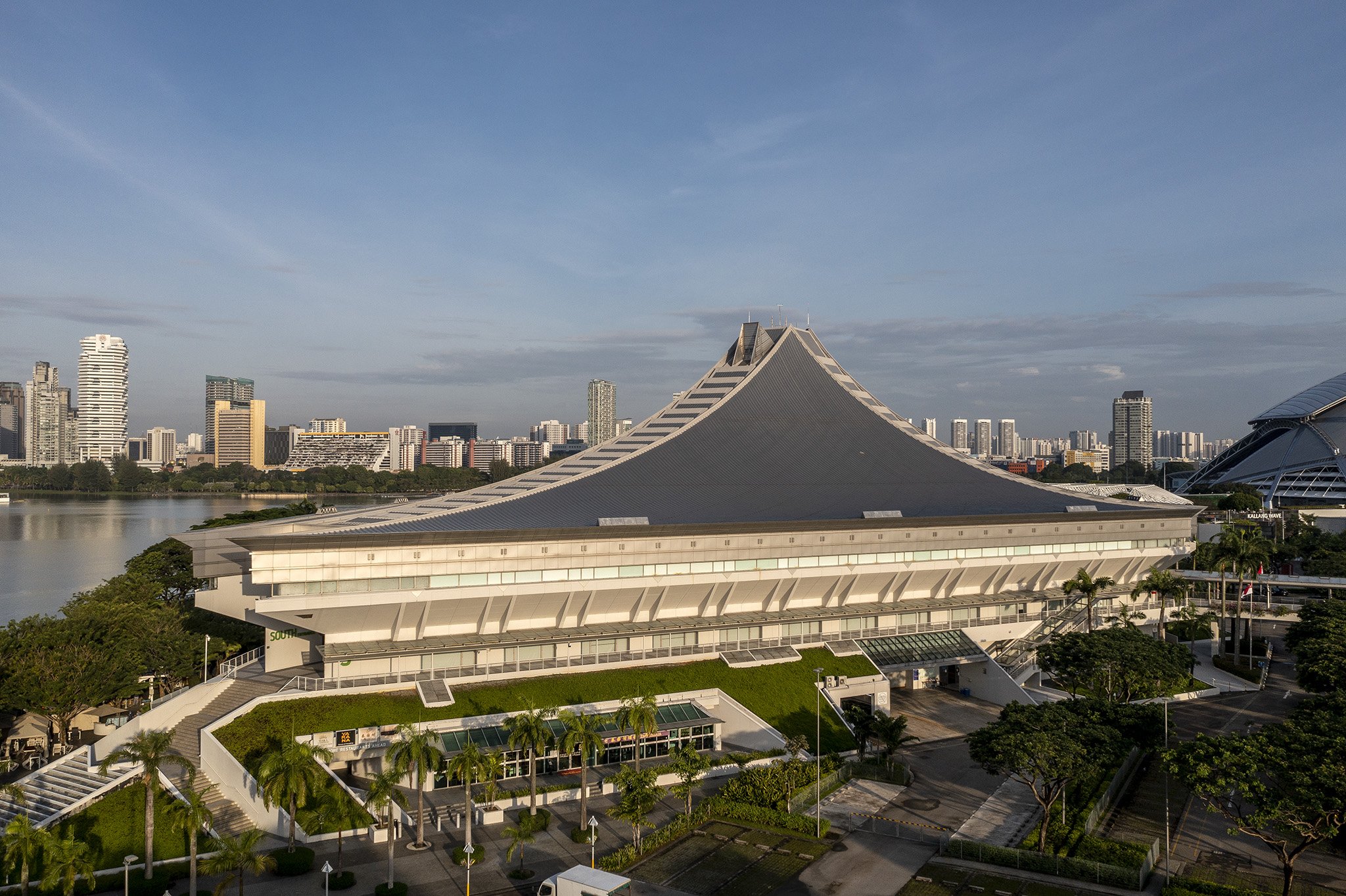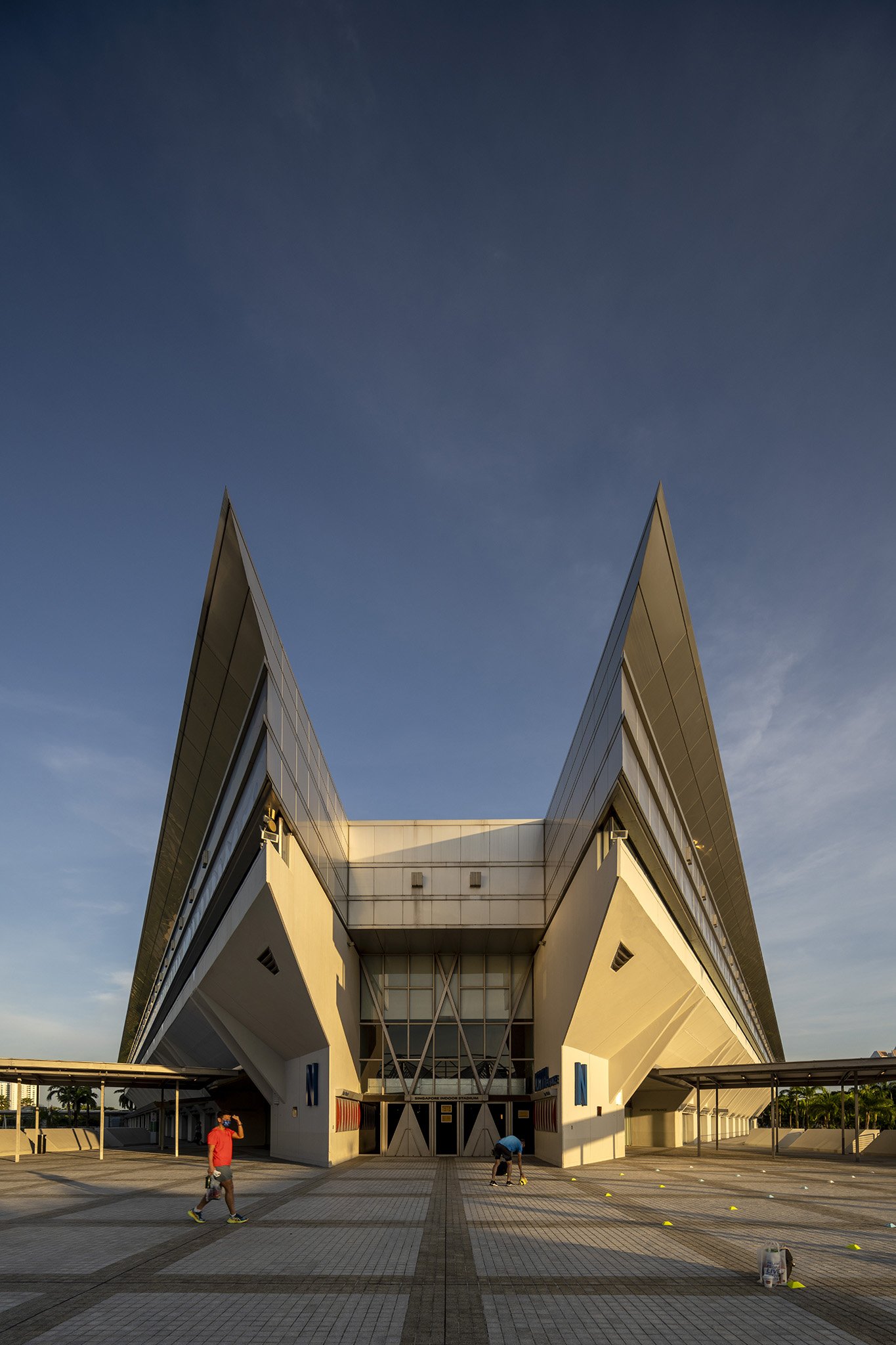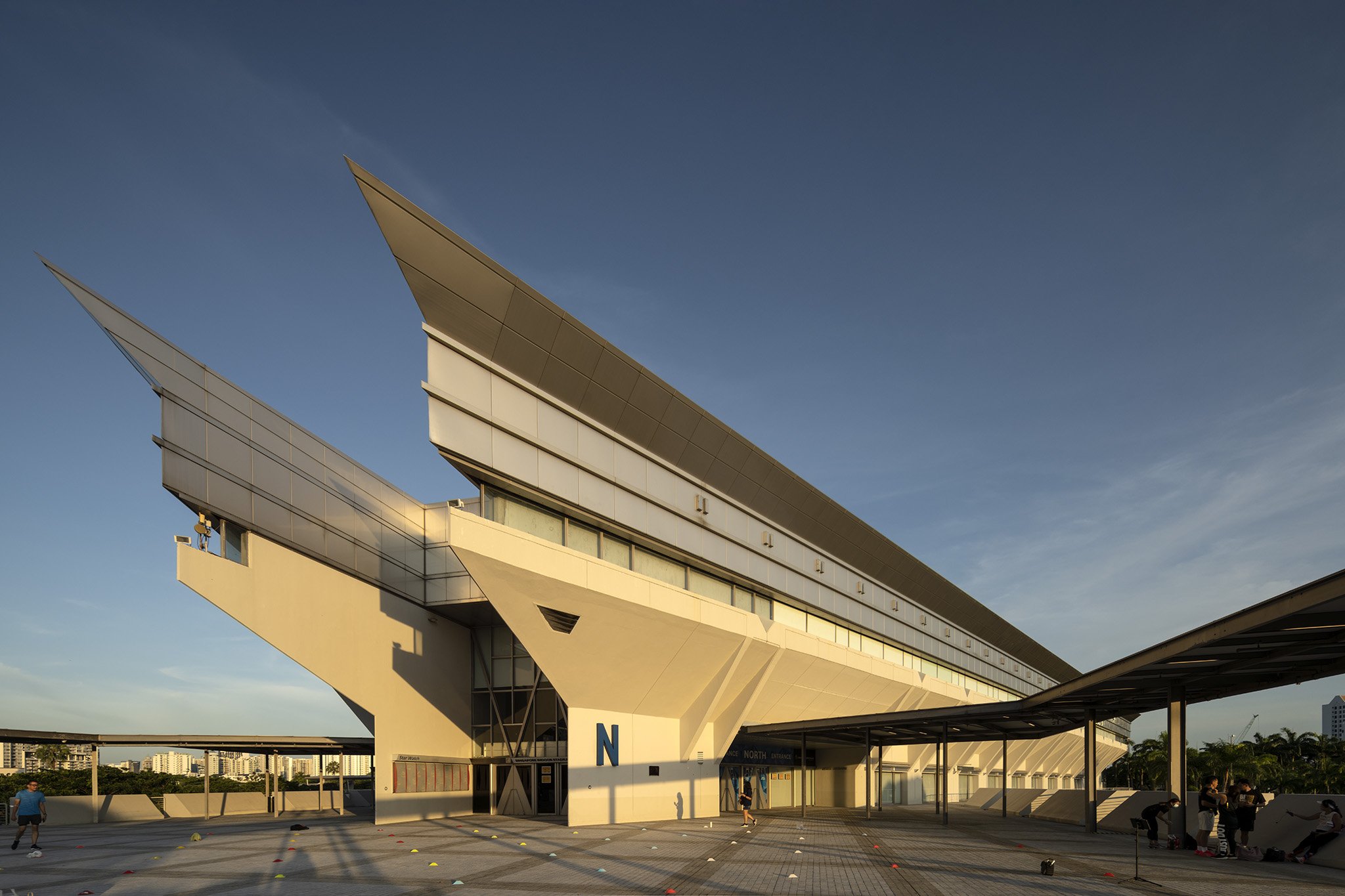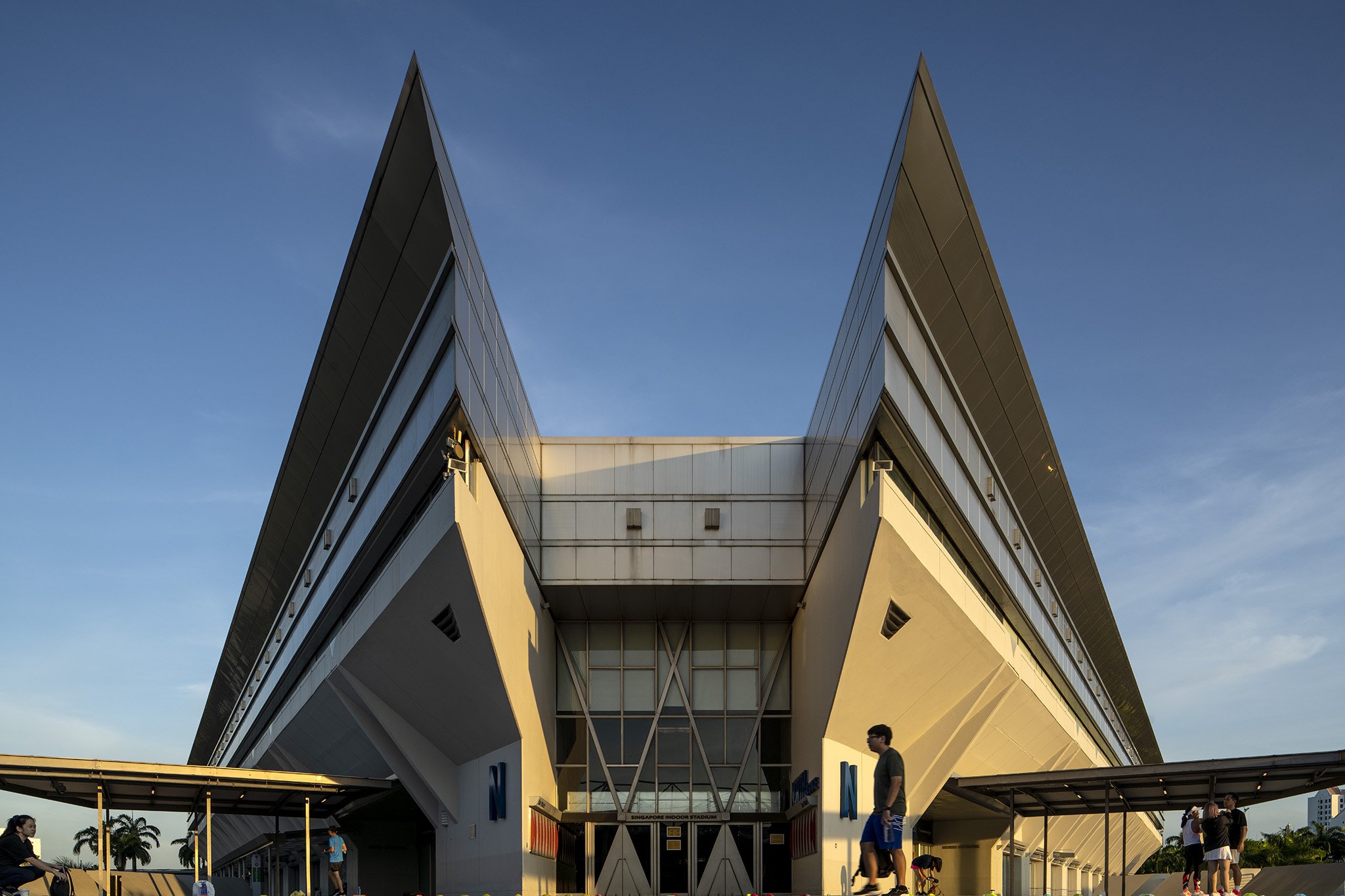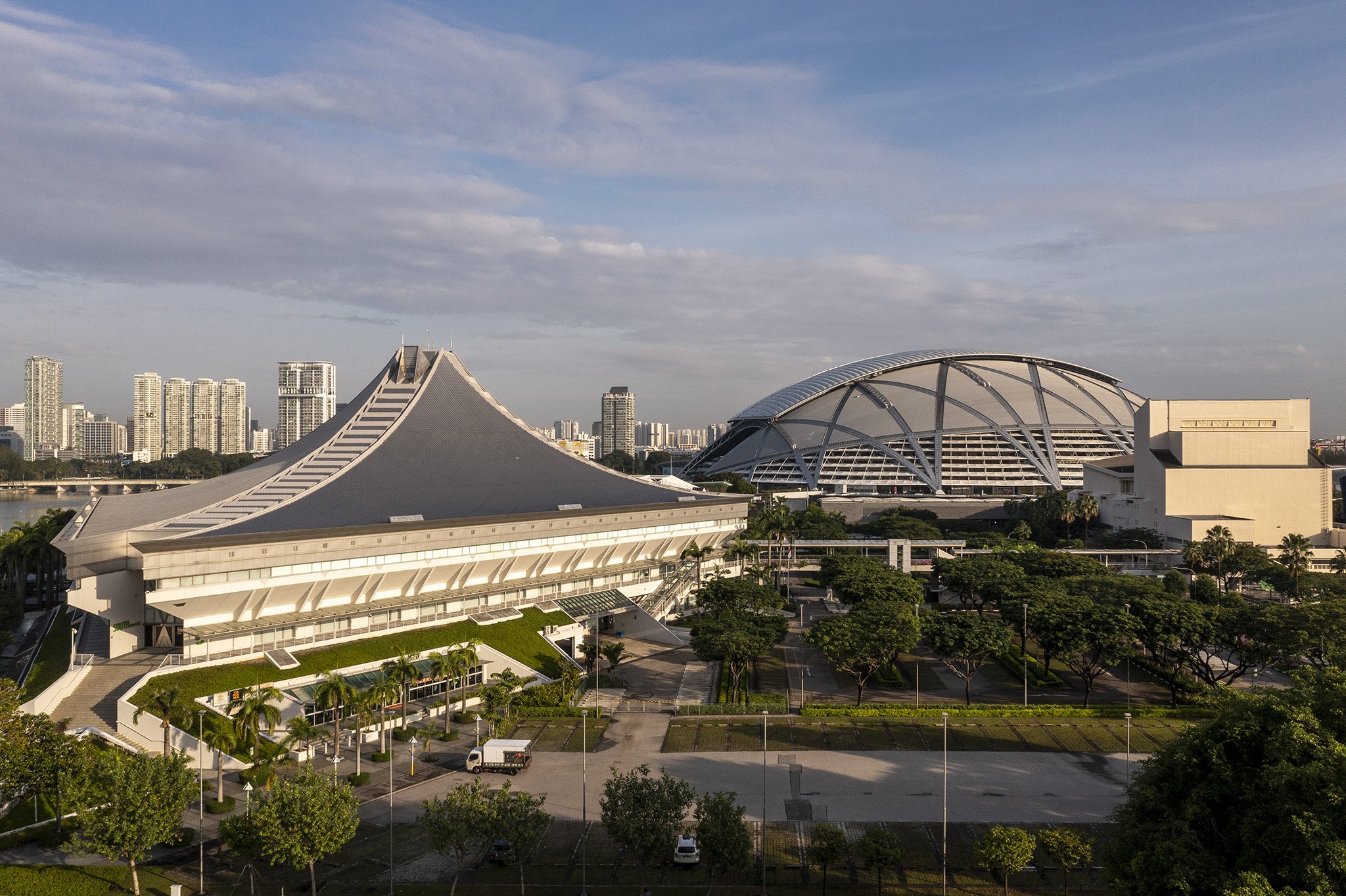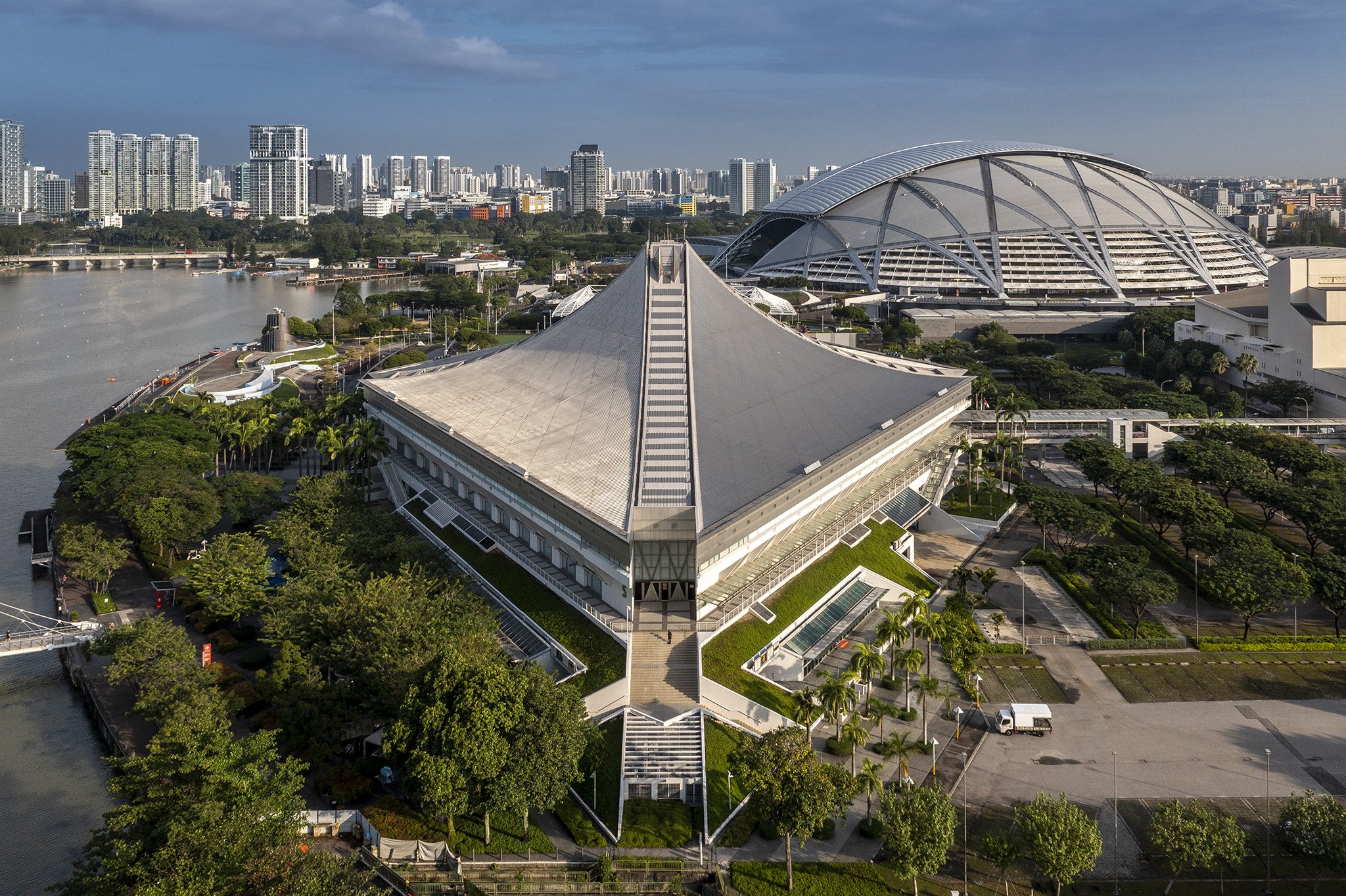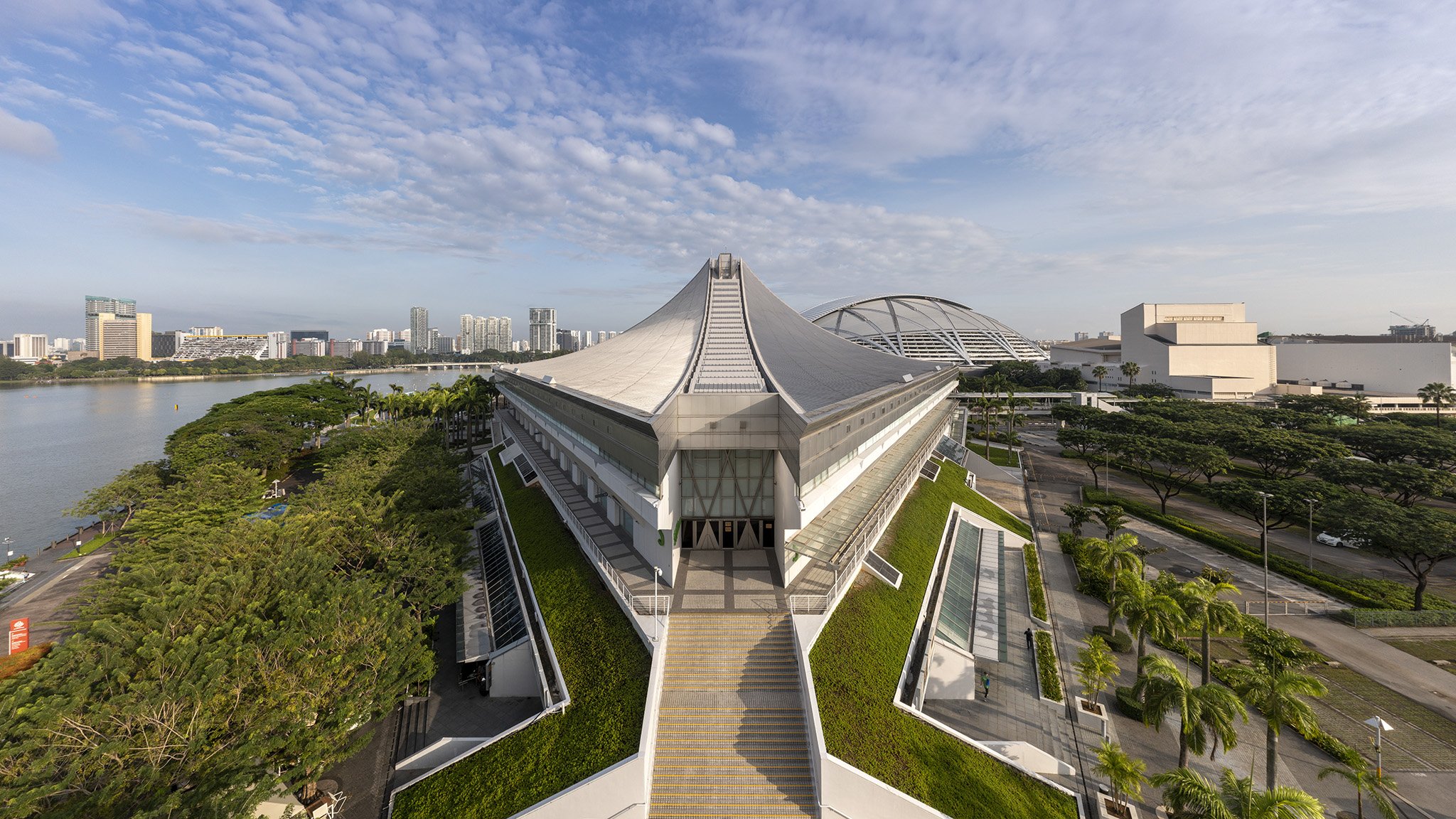Singapore Indoor Stadium
Officially opened on 31 December 1989, the Singapore Indoor Stadium is perhaps one of Singapore’s most stunning but underrated pieces of architecture. Designed by Professor Kenzo Tange in partnership with RSP Architects Planners & Architects, the seed for its existence was actually sown some two decades prior.
On 19 February 1970, the founding Prime Minister of Singapore Lee Kuan Yew was in Hong Kong to receive an Honorary Doctorate of Laws from the University of Hong Kong. There were five other recipients of honorary doctorates that day, and one of them was renowned Japanese Architect Professor Kenzo Tange. Kenzo Tange received his Honorary Doctorate in Science from the university at the same ceremony.
This was the first meeting between the two men, a meeting that would lead to Kenzo Tange’s later significant contribution to architecture and city planning here in Singapore.
Prime Minister Lee Kuan Yew would meet with Kenzo Tange again in Tokyo in November 1970 when the former was invited by the Japanese government for a State Visit that included meeting with then Japanese Prime Minister Eisaku Sato.
It was during this trip that PM Lee invited Professor Tange to visit Singapore.
Kenzo Tange accepted of course, and was hosted by PM Lee for a three day visit in December 1970 that included talks with the PM on the infrastructure and masterplanning of Singapore. Tange even squeezed in a public talk organised by the Faculty of Architecture at the then University of Singapore in conjunction with the Singapore Institute of Architects.
Kenzo Tange’s visit to Singapore was well documented by the local media and he was quoted saying that Queenstown and Toa Payoh were “one of the best solutions in providing long-term low-cost housing.”. He also publicly said that if requested by the Singapore government, he would be glad “to participate in the construction of the new Singapore.”
And invited he was when Kenzo Tange was asked by the Singapore government within a year in September 1971 to help with its master planning and design of Phase II the new Kallang Sports Complex, in particular a pair of indoor stadiums. It was believed that Professor Tange’s experience in the building of sports complexes like the beautiful Yoyogi National Gymnasium made Tange an obvious choice for the job of designing the indoor stadiums. The Public Works Department (PWD) had already commenced work in late 1966 on Phase I of the development that would become known as the National Stadium.
Unfortunately, Phase II of the Kallang Sports Complex fell victim to the fallout of the Oil Crisis and was officially cancelled in 1977. The National Stadium, meanwhile, was completed and opened in July 1973.
In 1981, Kenzo Tange went on to be appointed the master planner of the new Nanyang Technological Institute (NTI), today’s Nanyang Technological University. His winning scheme for OUB Bank at Raffles Place was also realised that year, for a building that would become OUB Centre - the tallest building in Singapore and the world outside of the US when completed in 1986.
In 1983, work started on the Pickering Street Engineering Complex for Telecoms (today’s SingTel). Known today as the Pickering Operations Complex, the building was also designed by Kenzo Tange and was declared open in July 1988.
It wasn’t until 1985 that the idea to build an indoor stadium officially resurfaced. Its announcement came during the midst of Singapore’s first post-independence recession where there was, among increased unemployment and companies winding up, also a construction slump. Thus, the plan to build the Indoor Stadium then was widely regarded as a public development spending project in order to keep the construction industry buoyant.
Then Minister of State for Community Development as well as Communications and Information Wong Kan Seng let the cat out of the bag at a National Day Family Fair in his constituency of Kuo Chuan on 25 August 1985 where he said that the proposed stadium “was part of the 1999 vision of Singapore as a culturally vibrant society, a national of excellence and a city of distinction.” He went on to add that moving ahead with building the indoor stadium “was a far-sighted programme, implemented in spite of the current economic slowdown.”
The Singapore Sports Council officially announced that Kenzo Tange would design the proposed Singapore Indoor Stadium in partnership with RSP Architects Planners & Engineers on 23 September 1985.
Almost immediately, there was an outcry in the local architectural community because according to the then president of the Singapore Institute of Architects Gan Eng Oon, the SIA had contacted the Singapore Sports Council almost a year before to encourage the Council to hold an open competition in order to select the architect for the project. However, the SIA and the local architectural community learnt only of Kenzo Tange’s appointment from the media.
While Kenzo Tange had already been linked to the project since it was first mooted back in the early 1970s, the announcement did come at a bad time when local architects were struggling in the 1985 economic recession with little private sector jobs so the protest was not unwarranted.
Both the Singapore Sports Council and then Minister for Community Development S. Dhanabalan quickly defended the government’s decision for choosing Professor Kenzo Tange. Unsurprisingly, the SSC, in a letter to the Press published on 5 October 1985 said that “Kenzo Tange Associations (KTA) was chosen as the external consultant as Prof Kenzo Tange put up the master plan for the sports complex at Kallang.” Minister Dhanabalan reiterated in Parliament as reported on 6 November 1985 that “(a)s Prof Tange has done some preliminary work on the proposed indoor stadium, it is logical to appoint Kenzo Tange Associates as joint consultants to complete the project.”
Despite this, debates continued to rage with multiple letters written to the press in following years regarding this topic of “fawning over a foreign starchitect” and the perceived sidelining of “equally talented” local architects for large projects.
Amidst all the commotion, Kenzo Tange was awarded the Pritzker Architecture Prize in May 1987, Architecture’s highest honour for any living architect.
The government stayed its path with Kenzo Tange’s appointment and design of course, and the Singapore Indoor Stadium was completed toward the end of 1989. Of special note was the stadium’s roof, which was constructed and then hydraulically hoisted to its full height using the Pantadome System developed by Professor M. Kawaguchi and first used in the construction of the World Memorial Hall in Kobe, Japan, in 1985. At its time of completion, the Singapore Indoor Stadium was only the third structure in the world built with the system. The hoisting of the roof took place at a rate of four metres a day and was completed in 6 days.
In an interview with The Straits Times a week after the Indoor Stadium’s official opening on New Year’s Eve 1989 by then Prime Minister Lee Kuan Yew, Kenzo Tange said that the oriental roof form of the Indoor Stadium was inspired by Chinese and Japanese temple roofs which “is also the perfect foil against the Central Business District skyline” and that the stadium was “exactly as I envisaged”.
Today, some 32 years after the Singapore Indoor Stadium first opened to the public, its design is still elegant, and it remains relevant as a venue for large events (at least in pre-COVID times). On top of hosting international sports events like the SEA Games as well as both ONE Fighting Championship and UFC tournaments, artistes who have performed at the Indoor Stadium include Elton John (1993), Bob Dylan (1994), Def Leppard (1996), Coldplay (2001, 2006, 2009), David Bowie (2004), Lady Gaga (2012) and Taylor Swift (2011, 2014, 2015). One of the last big pre-COIVID acts was The Backstreet Boys who performed there in 2006, 2008 and 2019.
Despite the completion of the new National Stadium in 2014, the Indoor Stadium has not lost any of its lustre. I have absolutely no doubt that local architects could have come up with a great design for an international standard indoor stadium in Singapore. Whether or not any of them could have arrived at the elegance of Kenzo Tange’s final design is up for debate of course.
Locations: 2 Stadium Walk, Singapore 397691
Architects: Kenzo Tange Associations (KTA)
Year: 1989
Status: Not conserved / Threatened
References:
Straits Times Story from 26 September 1971 detailing Kenzo Tange’s involvement with the Kallang sports complex: https://eresources.nlb.gov.sg/newspapers/Digitised/Article/straitstimes19710926-1.2.18
Straits Times Story from 24 September 1985 announcing Kenzo Tange’s appointment as architect for the Singapore Indoor Stadium: https://eresources.nlb.gov.sg/newspapers/Digitised/Article/straitstimes19850924-1.2.19.26
Straits Times Story from 28 September 1985 expressing disappointment by the SIA for not having a local architect appointed as design consultant of the Indoor Stadium: https://eresources.nlb.gov.sg/newspapers/Digitised/Article/straitstimes19850928-1.2.27.7
Letter to Straits Times on 4 October 1985 expressing disquiet on Kenzo Tange’s appoint as architect of the Singapore Indoor Stadium: https://eresources.nlb.gov.sg/newspapers/Digitised/Article/straitstimes19851004-1.2.44.4
An answer from the Singapore Sports Council as to why Tange was appointed: https://eresources.nlb.gov.sg/newspapers/Digitised/Article/straitstimes19851005-1.2.43.1
Another Straits Times Story voicing displeasure at Kenzo Tange having multiple projects in Singapore published JUST AFTER Professor Tange had been awarded the 1987 Pritzker Prize: https://eresources.nlb.gov.sg/newspapers/Digitised/Article/straitstimes19870601-1.2.35.6
A story in the Straits Times explaining the complex construction process of the Indoor Stadium:
https://eresources.nlb.gov.sg/newspapers/Digitised/Page/straitstimes19890301-1.1.39
Written on 6/3/2022 by Darren Soh on Facebook. This article is shared on Docomomo Singapore website with the permission of the author on 2/12/2023. All images are by Darren Soh.


